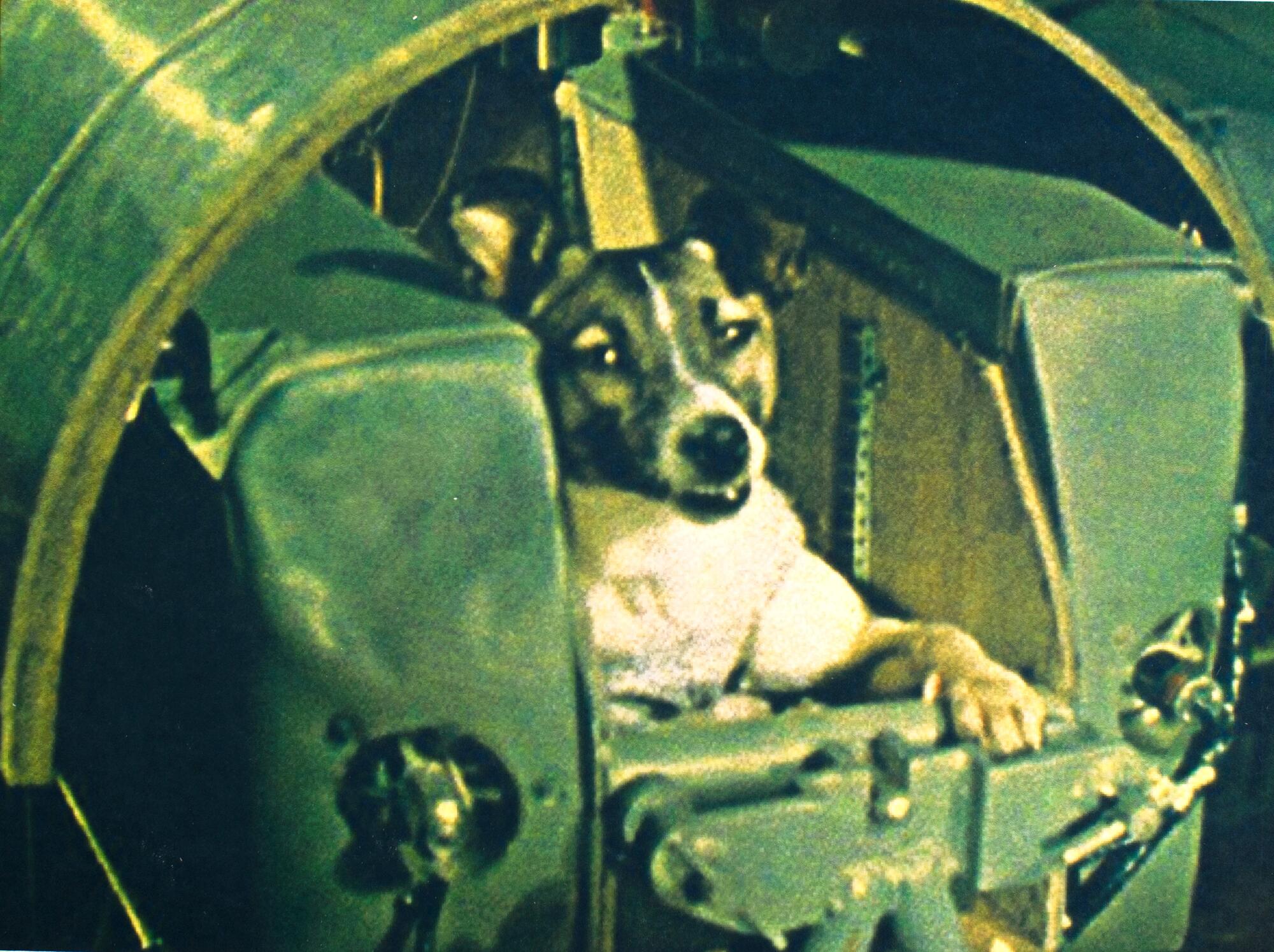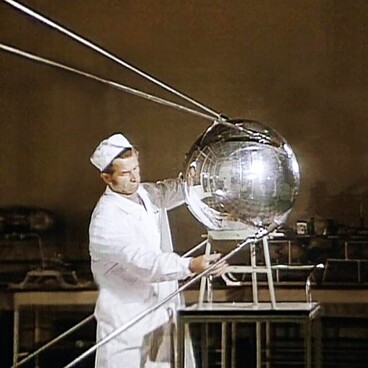Laika was the first animal to orbit the Earth. The Soviet spaceship Sputnik-2 with a dog cosmonaut aboard was launched on November 3, 1957. The sealed cabin that lifted Laika into space looked like a cylinder with a convex bottom. Inside, there was a power supply and an air conditioning system, which was supposed to regenerate the air for seven days. The dog’s return to Earth was not envisaged by the design of the space capsule.
During takeoff, the four-legged cosmonaut was hit by enormous overloads. The dog was pushed inside the container, yet she was still able to bear the pressure. Laika died from overheating after four orbits around the Earth. However, her flight proved that a living creature could survive a launch into orbit and a state of weightlessness. This allowed scientists and designers to begin preparing for a space flight with a person on board a spacecraft.
Laika became a hero who died for the sake of science. Today, photos of the dog can be seen in every cosmonautics museum and in a huge number of books about space; a variety of everyday products were named after her, and all kinds of postcards and stamps bearing her image were issued. On April 11, 2008, a monument to Laika was erected in Moscow on Petrovsko-Razumovskaya Alley on the territory of the Institute of Military Medicine, where the space experiment had been prepared.
Meanwhile, strictly speaking, Laika was not the first animal in space. In the 1940s and 1950s, the Soviet Union and the United States actively launched suborbital rockets, sometimes with living beings on board. Whereas the USSR chose to send dogs into space, the Americans preferred monkeys.
The Soviet specialists chose dogs for space exploration because dogs were much easier to train than primates. The next step was to choose the preferable breed and habitat. Experts came to the conclusion that mongrels, particularly those living in the street were the most adaptable. They are less delicate than purebred dogs and are used to the constant struggle for survival. Accordingly, the cosmonauts got a whole squad of plain street mongrels.
During takeoff, the four-legged cosmonaut was hit by enormous overloads. The dog was pushed inside the container, yet she was still able to bear the pressure. Laika died from overheating after four orbits around the Earth. However, her flight proved that a living creature could survive a launch into orbit and a state of weightlessness. This allowed scientists and designers to begin preparing for a space flight with a person on board a spacecraft.
Laika became a hero who died for the sake of science. Today, photos of the dog can be seen in every cosmonautics museum and in a huge number of books about space; a variety of everyday products were named after her, and all kinds of postcards and stamps bearing her image were issued. On April 11, 2008, a monument to Laika was erected in Moscow on Petrovsko-Razumovskaya Alley on the territory of the Institute of Military Medicine, where the space experiment had been prepared.
Meanwhile, strictly speaking, Laika was not the first animal in space. In the 1940s and 1950s, the Soviet Union and the United States actively launched suborbital rockets, sometimes with living beings on board. Whereas the USSR chose to send dogs into space, the Americans preferred monkeys.
The Soviet specialists chose dogs for space exploration because dogs were much easier to train than primates. The next step was to choose the preferable breed and habitat. Experts came to the conclusion that mongrels, particularly those living in the street were the most adaptable. They are less delicate than purebred dogs and are used to the constant struggle for survival. Accordingly, the cosmonauts got a whole squad of plain street mongrels.



